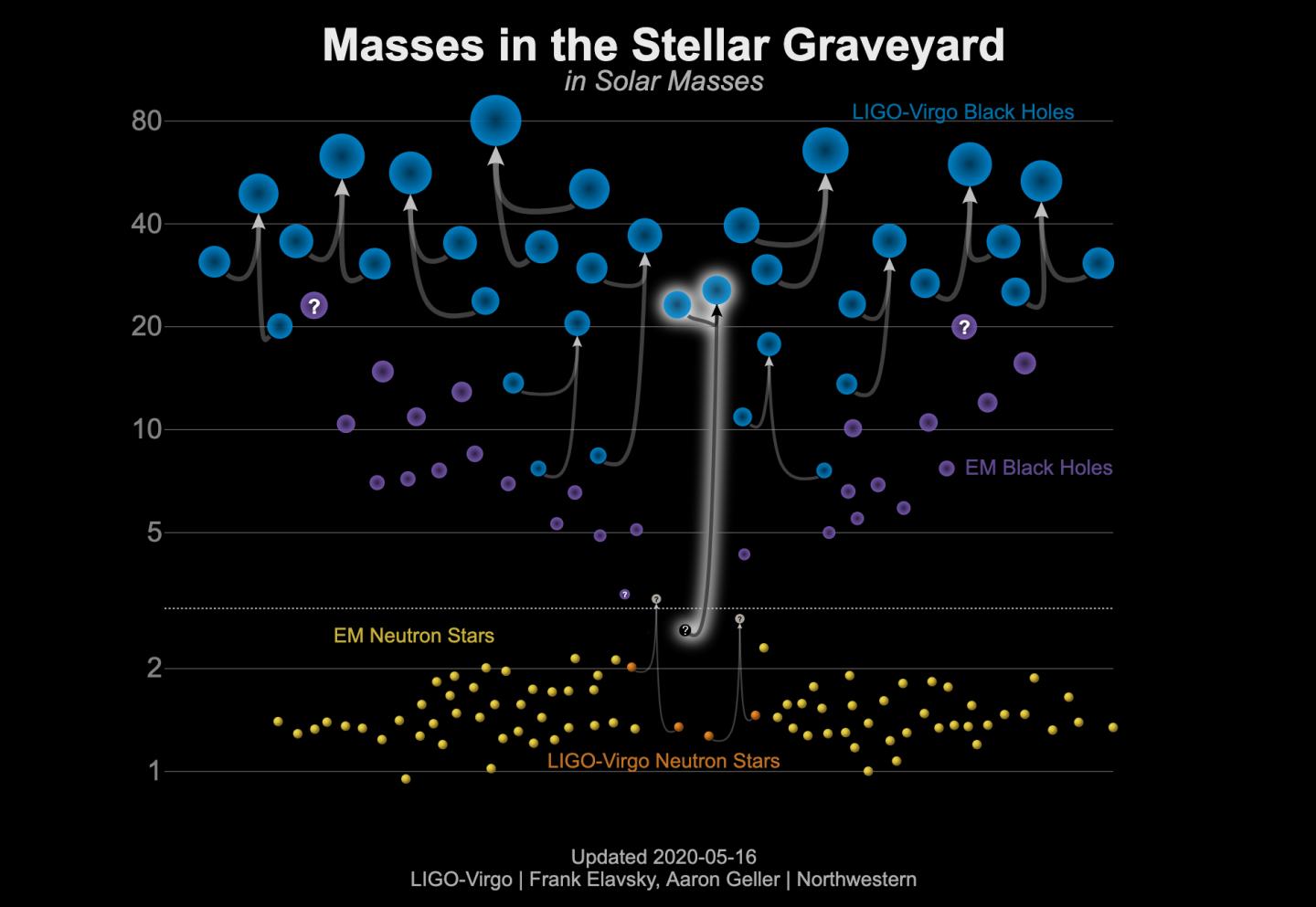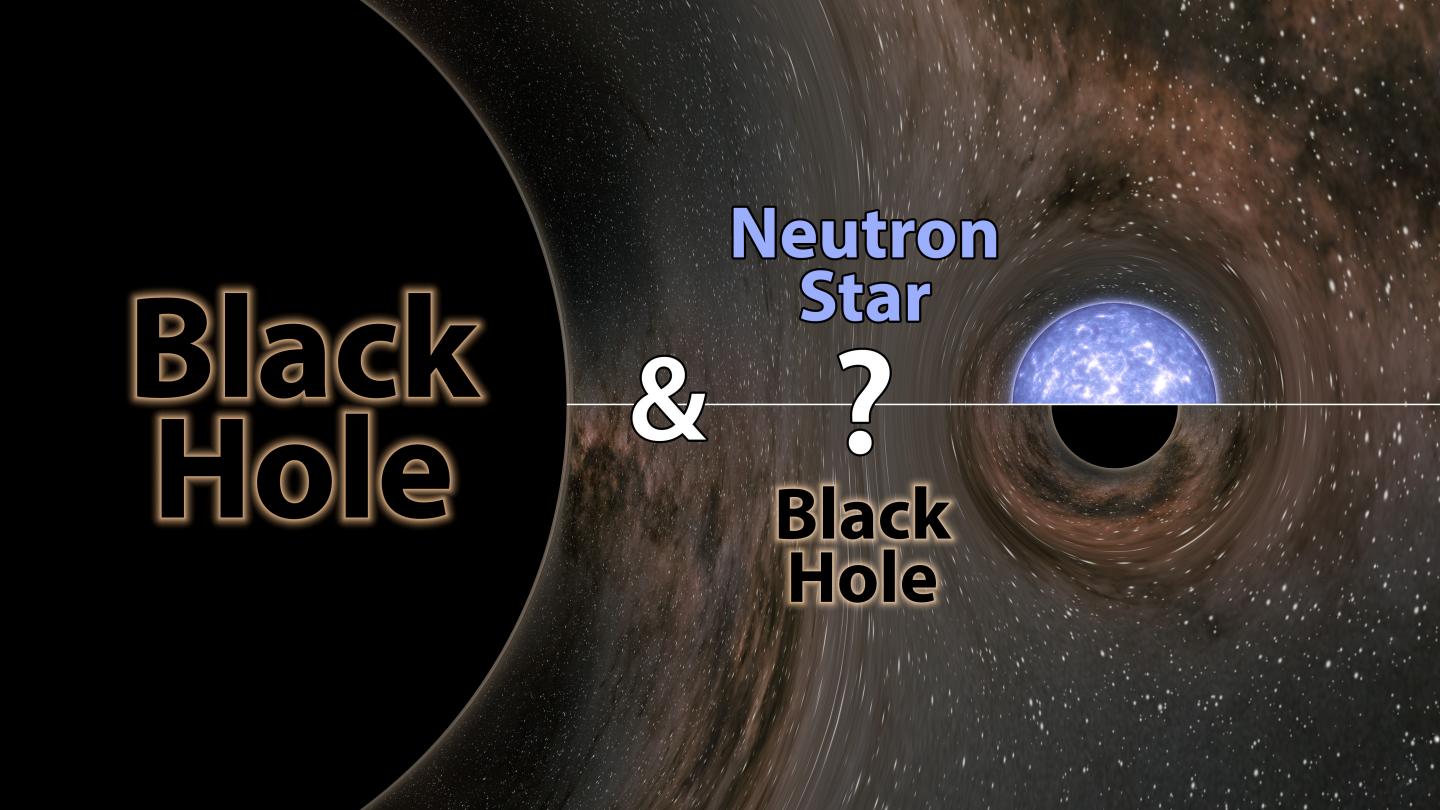Too heavy to be a neutron star, too light to be a black hole
Sometimes (always?), new research instruments like the Ligo-Virgo gravitational wave detector collaboration not only provide long expected answers to old questions, but also create completely new questions too. Take, for example, GW190412, which is the designation given to the latest conundrum, for which physicists can thank Ligo-Virgo. It refers to a gravitational wave burst that reached Earth on 14 August 2019. From the measured data, the researchers determined that a relatively lightweight object and a significantly more massive object must have merged together to form a black hole with a mass of now 25 solar masses.
There’s no question about the nature of the heavier object, which was determined to have a mass of 23 solar masses and thus had to be a black hole. But the smaller object, at 2.6 solar masses, was too heavy to be a neutron star, but also too light to be a black hole. The fate of a star is determined by its original mass. When it dies and explodes, all that remains is either a neutron star with a mass of maximum 2.5 solar masses (called the Tolman-Oppenheimer-Volkoff limit) or a black hole that is significantly more massive. The previously lightest known stellar black hole had a mass of 5 solar masses. It had seemed that there could be no objects within this rather large gap.
So, what could it be? The researchers didn’t speculate. They assume that they’ve observed either the lightest black hole or the heaviest neutron star to date. Such objects could also have formed or grown in other ways. It might also be possible that the measurement accuracy simply wasn’t good enough – the mass of the lighter object was determined to be between 2.50 and 2.67 solar masses with only 90% likelihood. But it’s probably not a light black hole. In this case, the researchers would have also expected to see a light burst, but that didn’t happen.
Or maybe there was also an even more exotic object involved in the incidence 800 million light-years from Earth, perhaps a gravastar or a quark star? Unfortunately, we can’t check for this anymore, because the two original objects no longer exist. The researchers calculated that such binary objects should be formed surprisingly frequently from a lightweight component and a massive component. So, maybe we will soon have another chance to discover more about this kind of object.

